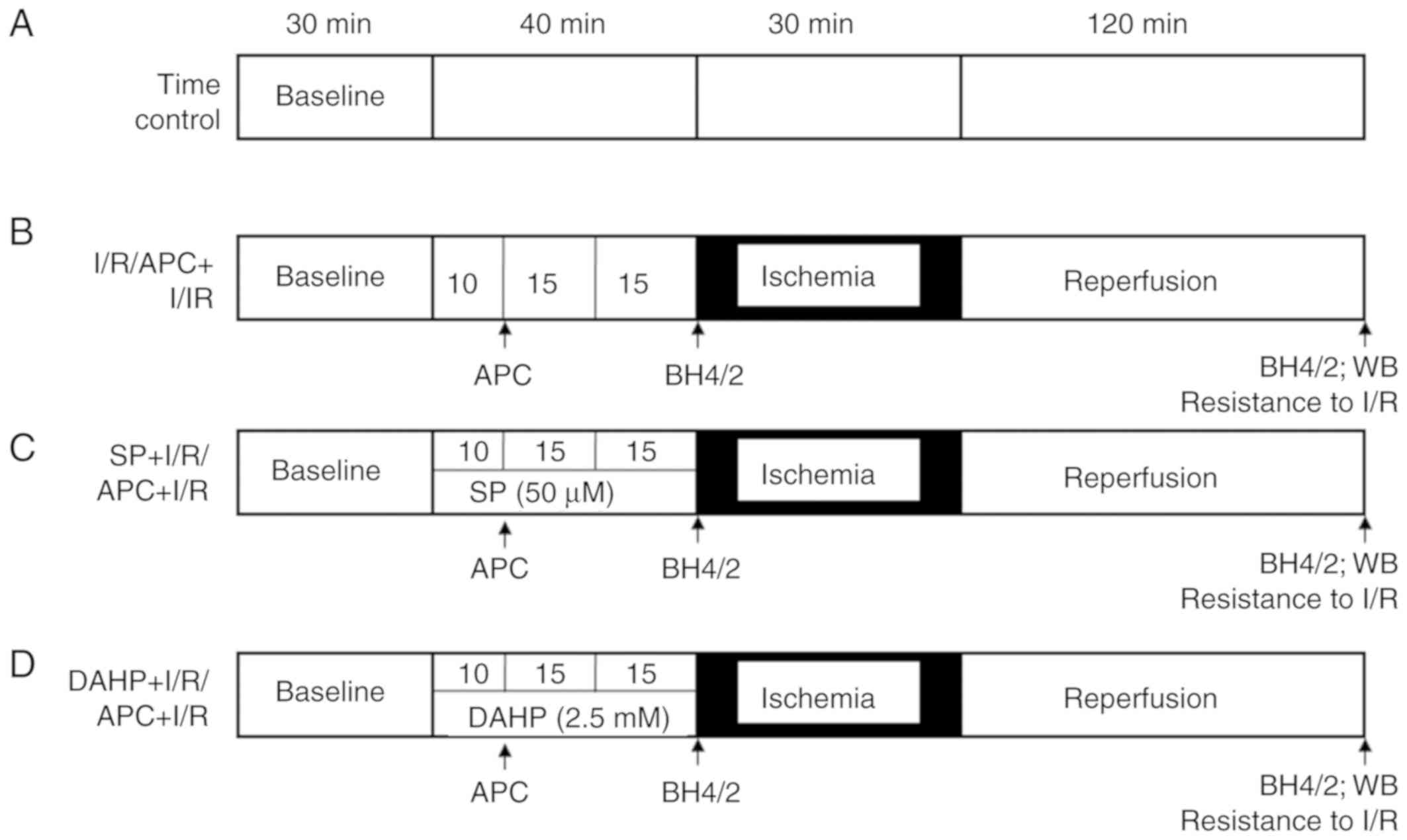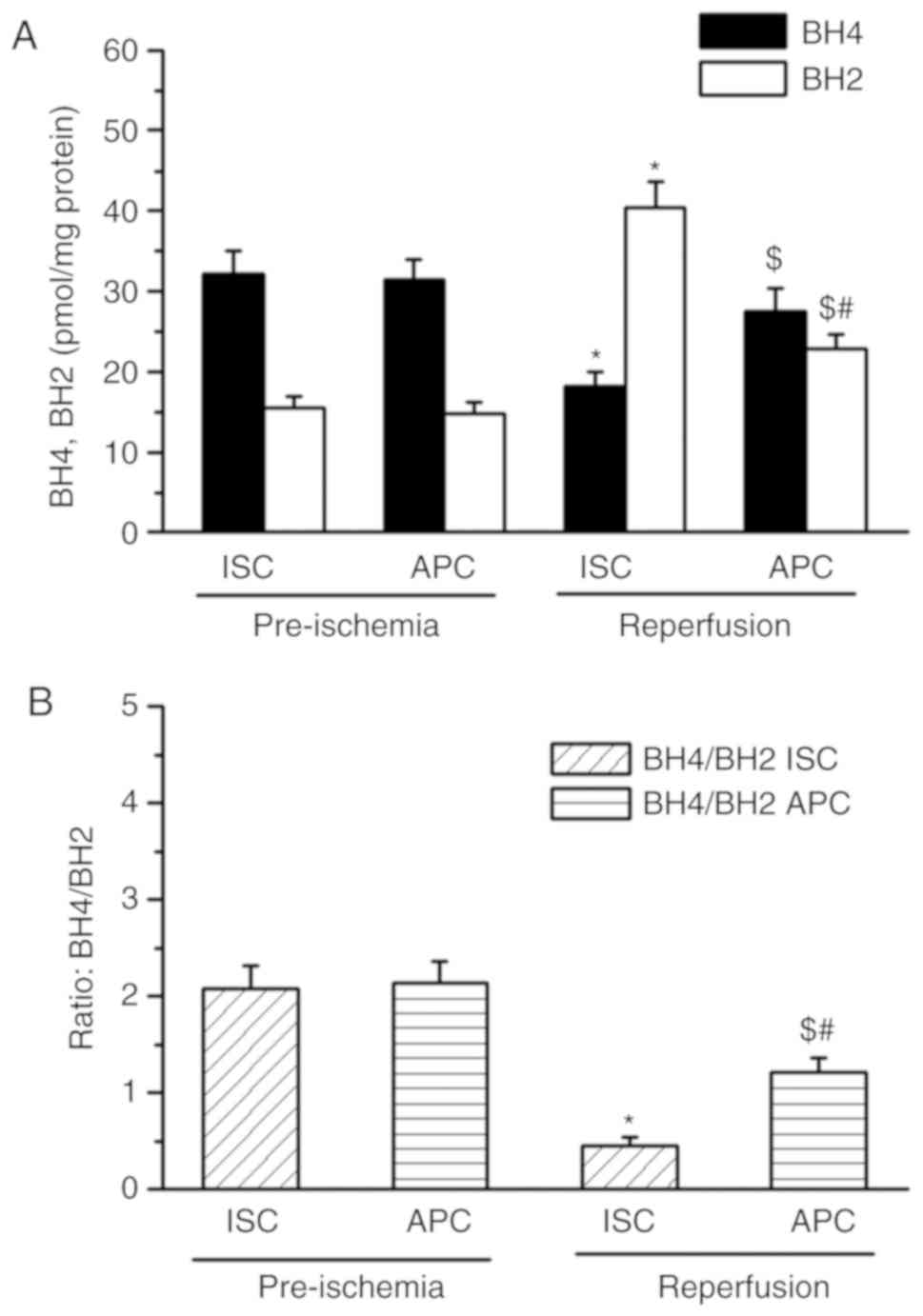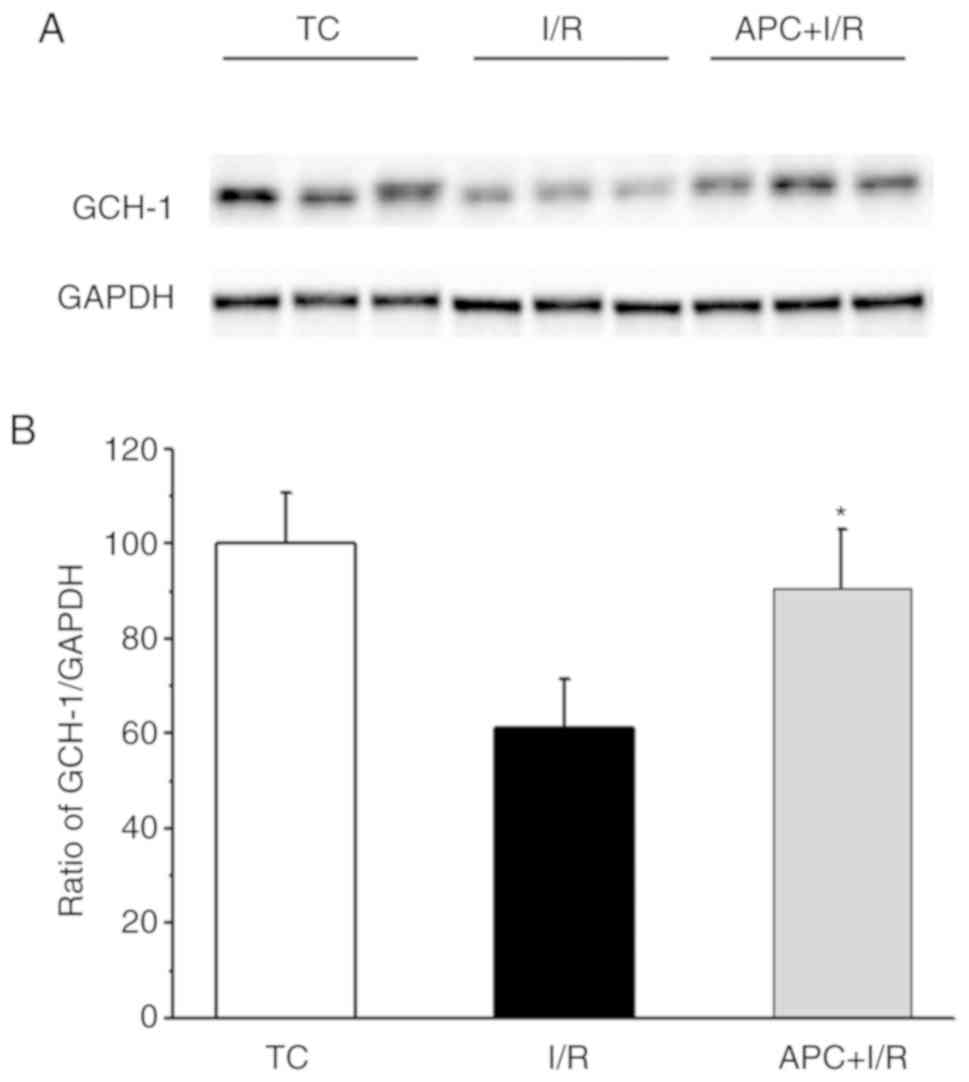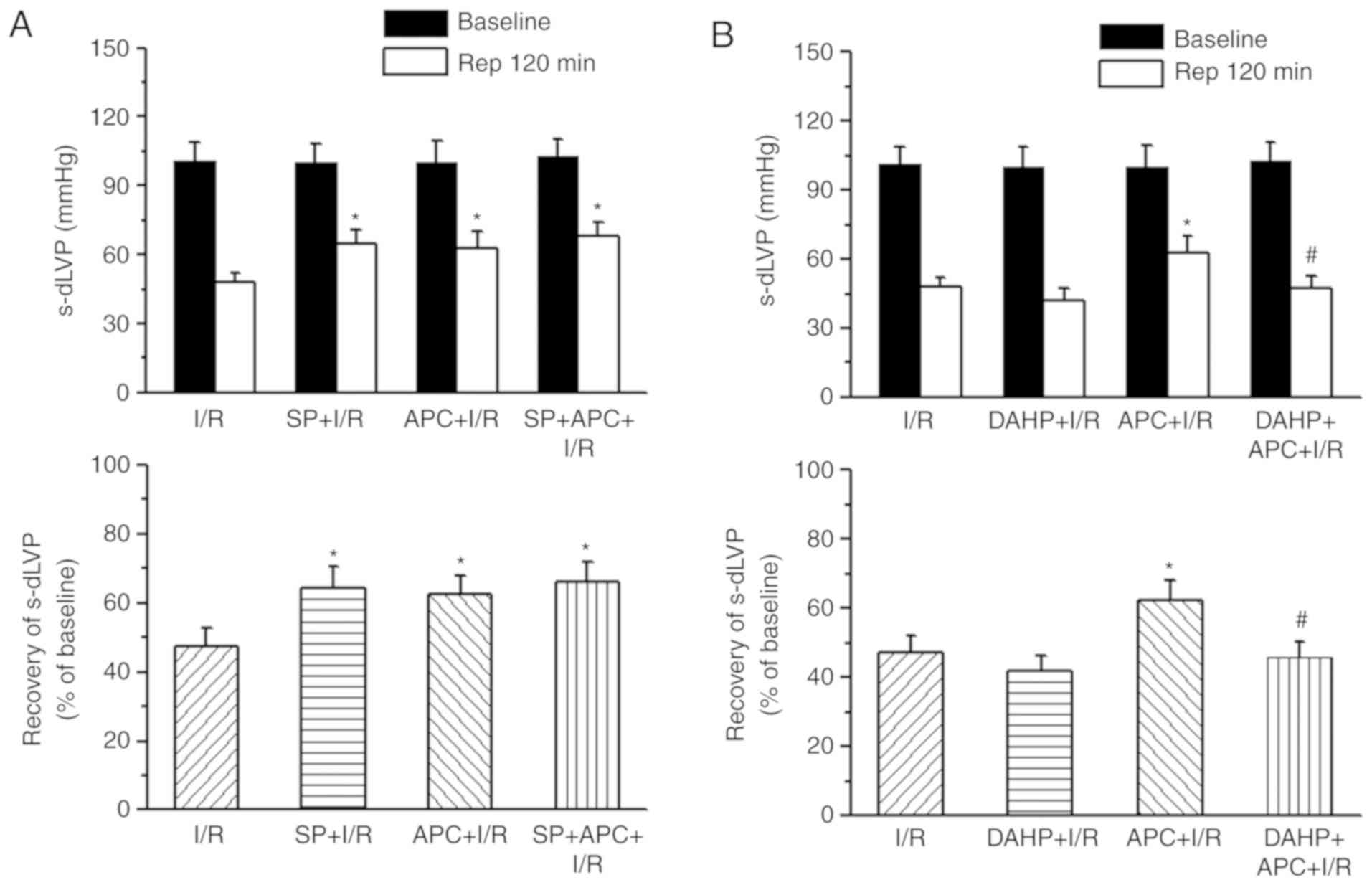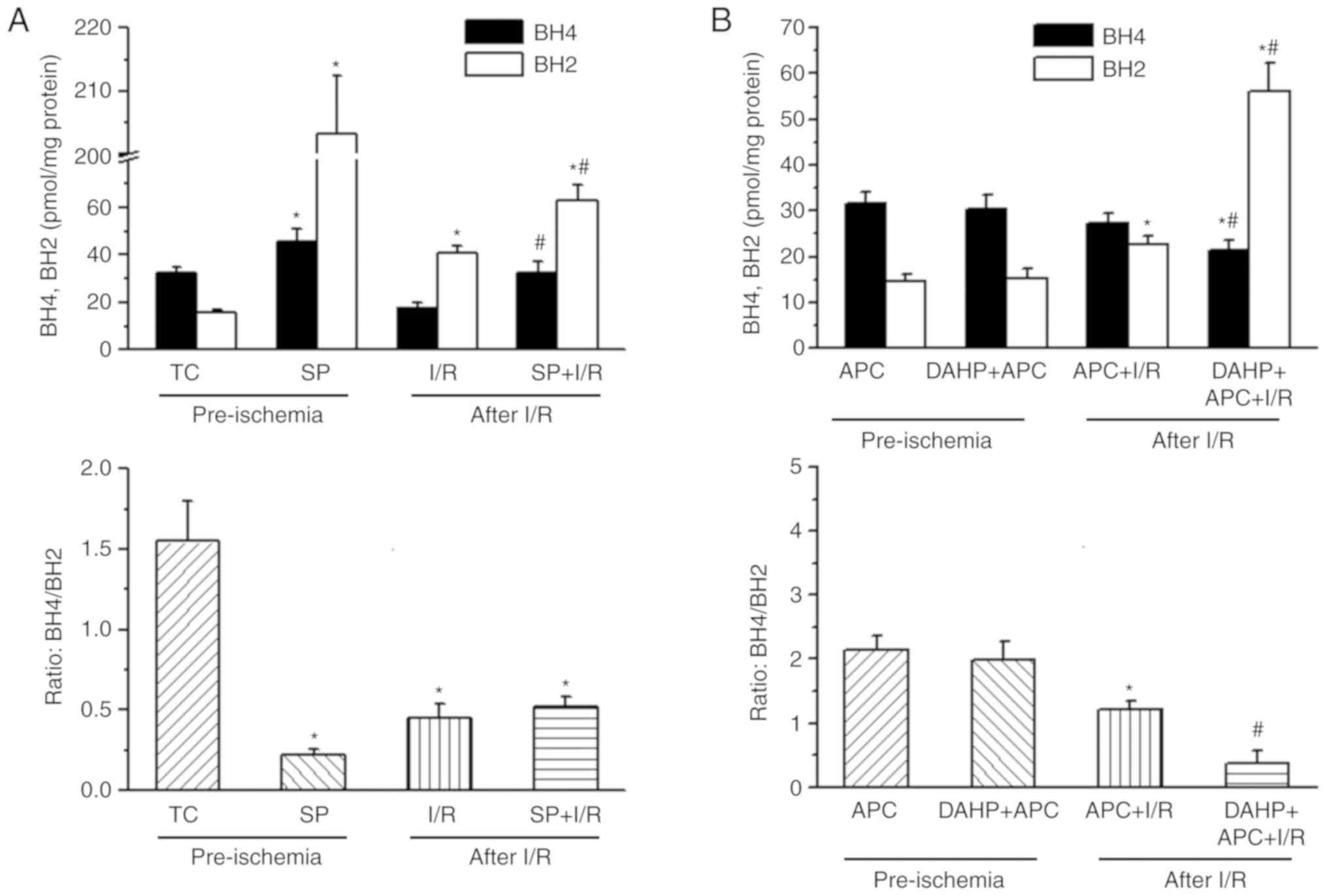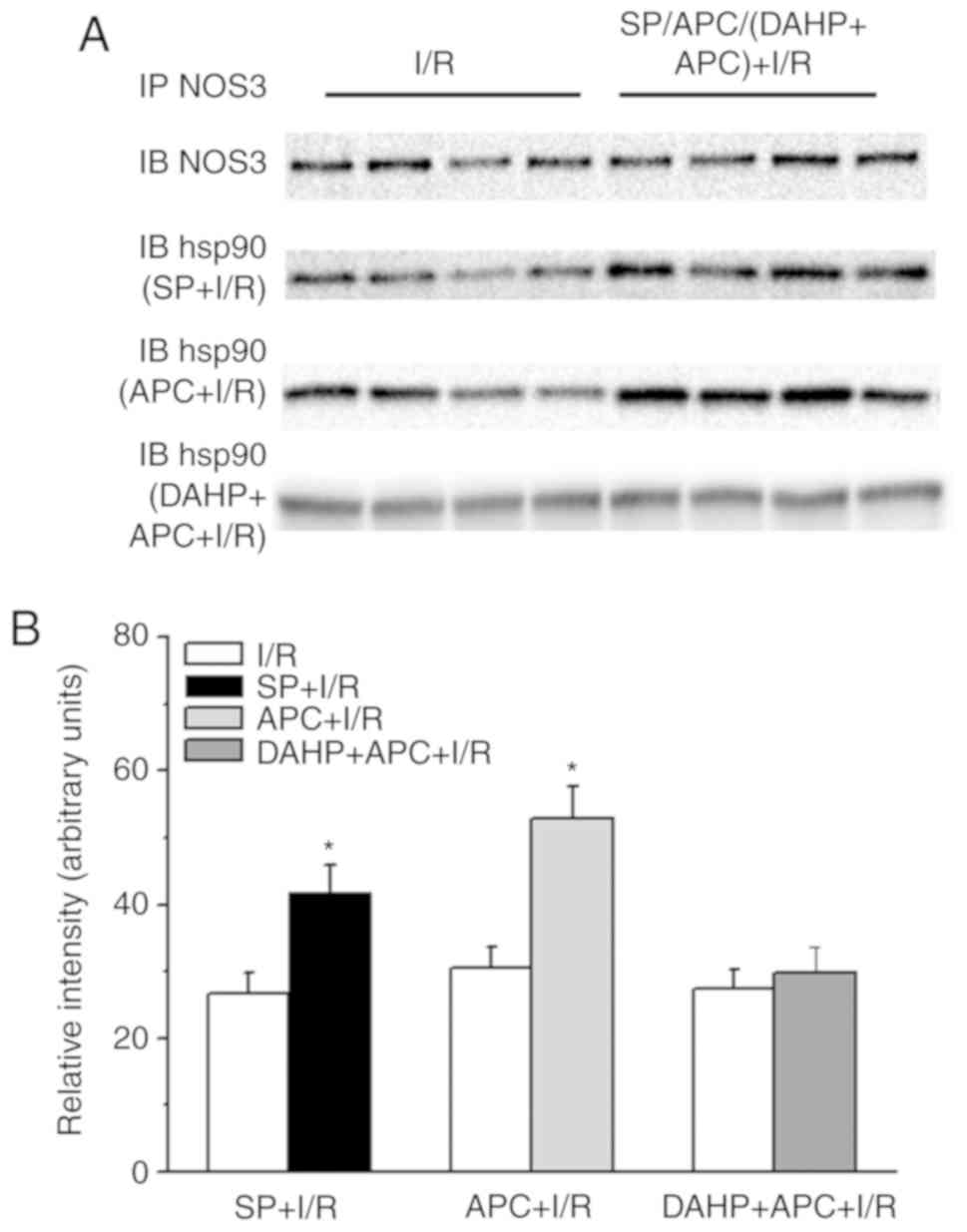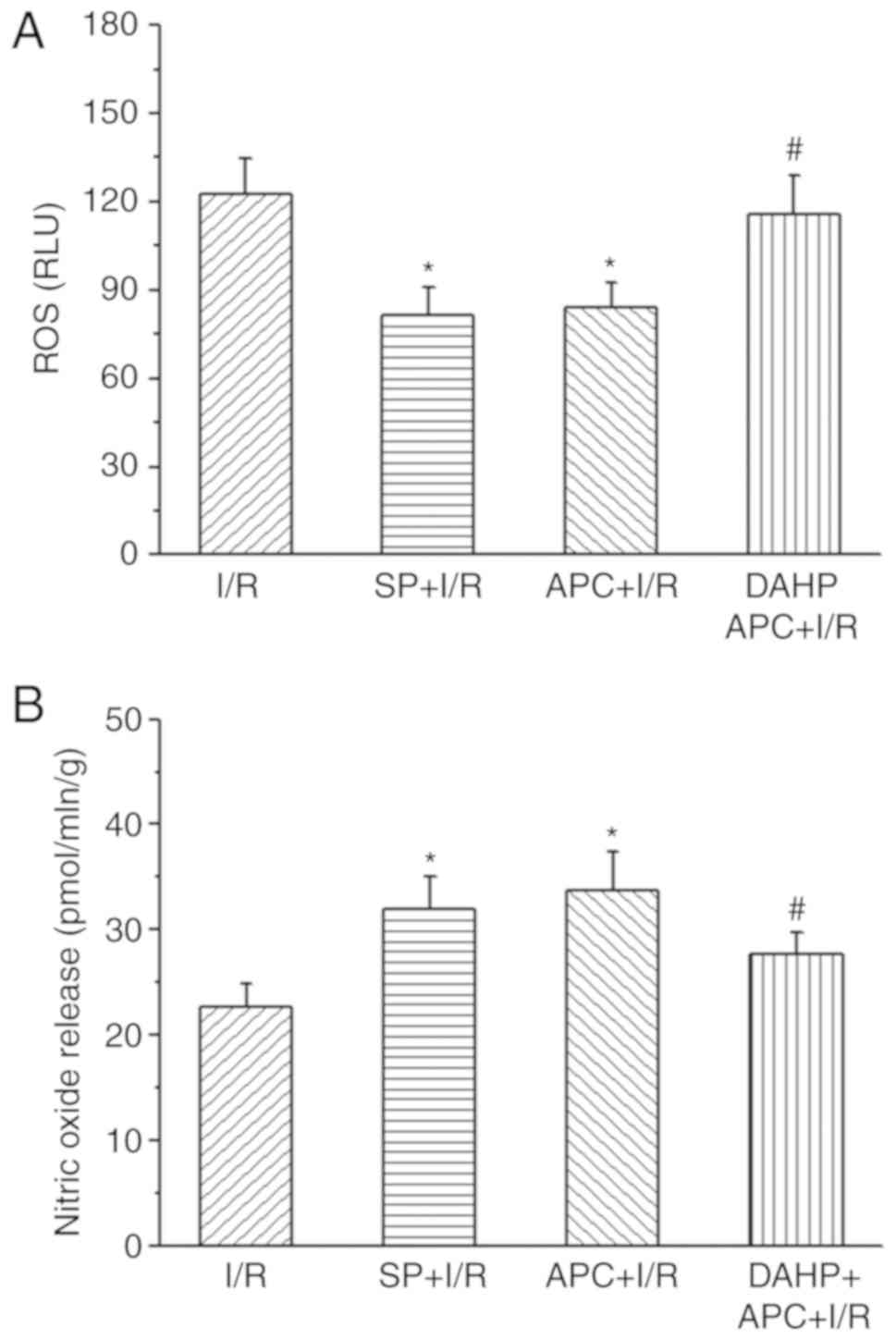|
1
|
Bredt DS and Snyder SH: Nitric oxide: A
physiologic messenger molecule. Annu Rev Biochem. 63:175–195. 1994.
View Article : Google Scholar : PubMed/NCBI
|
|
2
|
Ziolo MT, Kohr MJ and Wang H: Nitric oxide
signaling and the regulation of myocardial function. J Mol Cell
Cardiol. 45:625–632. 2008. View Article : Google Scholar : PubMed/NCBI
|
|
3
|
Gaynullina DK, Schubert R and Tarasova OS:
Changes in endothelial nitric oxide production in systemic vessels
during early ontogenesis-A key mechanism for the perinatal
adaptation of the circulatory system. Int J Mol Sci. 20:pii: E1421.
2019. View Article : Google Scholar : PubMed/NCBI
|
|
4
|
Yuyun MF, Ng LL and Ng GA: Endothelial
dysfunction, endothelial nitric oxide bioavailability,
tetrahydrobiopterin, and 5-methyltetrahydrofolate in cardiovascular
disease. Where are we with therapy? Microvasc Res. 119:7–12.
2018.
|
|
5
|
Xie L, Hu D, Qin H, Zhang W, Zhang S, Feng
Y, Yao H, Xiao Y, Yao K and Huang X: In vivo gum arabic-coated
tetrahydrobi-opterin protects against myocardial ischemia
reperfusion injury by preserving eNOS coupling. Life Sci.
219:294–302. 2019. View Article : Google Scholar : PubMed/NCBI
|
|
6
|
Dumitrescu C, Biondi R, Xia Y, Cardounel
AJ, Druhan LJ, Ambrosio G and Zweier JL: Myocardial ischemia
results in tetrahydrobiopterin (BH4) oxidation with impaired
endothelial function ameliorated by BH4. Proc Natl Acad Sci USA.
104:15081–15086. 2007. View Article : Google Scholar : PubMed/NCBI
|
|
7
|
Shi Y, Hutchins W, Ogawa H, Chang CC,
Pritchard KA Jr, Zhang C, Khampang P, Lazar J, Jacob HJ, Rafiee P
and Baker JE: Increased resistance to myocardial ischemia in the
Brown Norway vs Dahl S rat: Role of nitric oxide synthase and
Hsp90. J Mol Cell Cardiol. 38:625–635. 2005. View Article : Google Scholar : PubMed/NCBI
|
|
8
|
An J, Du J, Wei N, Xu H, Pritchard KA Jr
and Shi Y: Role of tetrahydrobiopterin in resistance to myocardial
ischemia in Brown Norway and Dahl S rats. Am J Physiol Heart Circ
Physiol. 297:H1783–H1791. 2009. View Article : Google Scholar : PubMed/NCBI
|
|
9
|
Xie L, Talukder MA, Sun J, Varadharaj S
and Zweier JL: Liposomal tetrahydrobiopterin preserves eNOS
coupling in the post-ischemic heart conferring in vivo
cardioprotection. J Mol Cell Cardiol. 86:14–22. 2015. View Article : Google Scholar : PubMed/NCBI
|
|
10
|
Kawahara K, Takase M and Yamauchi Y:
Increased vulnerability to ischemia/reperfusion-induced ventricular
tachyarrhythmias by pre-ischemic inhibition of nitric oxide
synthase in isolated rat hearts. Cardiovasc Pathol. 12:49–56. 2003.
View Article : Google Scholar : PubMed/NCBI
|
|
11
|
Baotic I, Weihrauch D, Procknow J,
Vasquez-Vivar J, Ge ZD, Sudhakaran S, Warltier DC and Kersten JR:
Isoflurane favorably modulates guanosine triphosphate
cyclohydrolase-1 and endo-thelial nitric oxide synthase during
myocardial ischemia and reperfusion injury in rats. Anesthesiology.
123:582–589. 2015. View Article : Google Scholar : PubMed/NCBI
|
|
12
|
Guerrero-Orriach JL, Escalona Belmonte JJ,
Ramirez Fernandez A, Ramirez Aliaga M, Rubio Navarro M and Cruz
Manas J: Cardioprotection with halogenated gases: How does it
occur? Drug Des Devel Ther. 11:837–849. 2017. View Article : Google Scholar : PubMed/NCBI
|
|
13
|
Novalija E, Varadarajan SG, Camara AK, An
J, Chen Q, Riess ML, Hogg N and Stowe DF: Anesthetic
preconditioning: Triggering role of reactive oxygen and nitrogen
species in isolated hearts. Am J Physiol Heart Circ Physiol.
283:H44–H52. 2002. View Article : Google Scholar : PubMed/NCBI
|
|
14
|
Amour J, Le Manach YL, Borel M, Lenfant F,
Nicolas-Robin A, Carillion A, Ripart J, Riou B and Langeron O:
Comparison of single-use and reusable metal laryngoscope blades for
orotracheal intubation during rapid sequence induction of
anesthesia: A multicenter cluster randomized study. Anesthesiology.
112:325–332. 2010. View Article : Google Scholar : PubMed/NCBI
|
|
15
|
Stowe DF, Gadicherla AK, Zhou Y, Aldakkak
M, Cheng Q, Kwok WM, Jiang MT, Heisner JS, Yang M and Camara AK:
Protection against cardiac injury by small Ca(2+)-sensitive K(+)
channels identified in guinea pig cardiac inner mitochondrial
membrane. Biochim Biophys Acta. 1828:427–442. 2013. View Article : Google Scholar
|
|
16
|
Chatterjee A, Black SM and Catravas JD:
Endothelial nitric oxide (NO) and its pathophysiologic regulation.
Vascul Pharmacol. 49:134–140. 2008. View Article : Google Scholar : PubMed/NCBI
|
|
17
|
Thomas SR, Chen K and Keaney JF Jr:
Oxidative stress and endothelial nitric oxide bioactivity. Antioxid
Redox Signal. 5:181–194. 2003. View Article : Google Scholar : PubMed/NCBI
|
|
18
|
Vasquez-Vivar J, Kalyanaraman B, Martasek
P, Hogg N, Masters BS, Karoui H, Tordo P and Pritchard KA Jr:
Superoxide generation by endothelial nitric oxide synthase: The
influence of cofactors. Proc Natl Acad Sci USA. 95:9220–9225. 1998.
View Article : Google Scholar : PubMed/NCBI
|
|
19
|
Hemmens B and Mayer B: Enzymology of
nitric oxide synthases. Methods Mol Biol. 100:1–32. 1998.
|
|
20
|
Leucker TM, Ge ZD, Procknow J, Liu Y, Shi
Y, Bienengraeber M, Warltier DC and Kersten JR: Impairment of
endothelial-myocardial interaction increases the susceptibility of
cardiomyocytes to ischemia/reperfusion injury. PLoS One.
8:e700882013. View Article : Google Scholar : PubMed/NCBI
|
|
21
|
Vasquez-Vivar J, Kalyanaraman B and
Martasek P: The role of tetrahydrobiopterin in superoxide
generation from eNOS: Enzymology and physiological implications.
Free Radic Res. 37:121–127. 2003. View Article : Google Scholar : PubMed/NCBI
|
|
22
|
Gorren AC, List BM, Schrammel A, Pitters
E, Hemmens B, Werner ER, Schmidt K and Mayer B:
Tetrahydrobiopterin-free neuronal nitric oxide synthase: Evidence
for two identical highly anticooperative pteridine binding sites.
Biochemistry. 35:16735–16745. 1996. View Article : Google Scholar : PubMed/NCBI
|
|
23
|
Moens AL and Kass DA: Tetrahydrobiopterin
and cardiovascular disease. Arterioscler Thromb Vasc Biol.
26:2439–2444. 2006. View Article : Google Scholar : PubMed/NCBI
|
|
24
|
Tiefenbacher CP, Lee CH, Kapitza J, Dietz
V and Niroomand F: Sepiapterin reduces postischemic injury in the
rat heart. Pflugers Arch. 447:1–7. 2003. View Article : Google Scholar : PubMed/NCBI
|
|
25
|
Liu Y, Baumgardt SL, Fang J, Shi Y, Qiao
S, Bosnjak ZJ, Vasquez-Vivar J, Xia Z, Warltier DC, Kersten JR and
Ge ZD: Transgenic overexpression of GTP cyclohydrolase 1 in
cardio-myocytes ameliorates post-infarction cardiac remodeling. Sci
Rep. 7:30932017. View Article : Google Scholar
|
|
26
|
Couto GK, Paula SM, Gomes-Santos IL,
Negrao CE and Rossoni LV: Exercise training induces eNOS coupling
and restores relaxation in coronary arteries of heart failure rats.
Am J Physiol Heart Circ Physiol. 314:H878–H887. 2018. View Article : Google Scholar : PubMed/NCBI
|
|
27
|
Vladic N, Ge ZD, Leucker T, Brzezinska AK,
Du JH, Shi Y, Warltier DC, Pratt PF Jr and Kersten JR: Decreased
tetrahy-drobiopterin and disrupted association of Hsp90 with eNOS
by hyperglycemia impair myocardial ischemic preconditioning. Am J
Physiol Heart Circ Physiol. 301:H2130–H2139. 2011. View Article : Google Scholar : PubMed/NCBI
|















